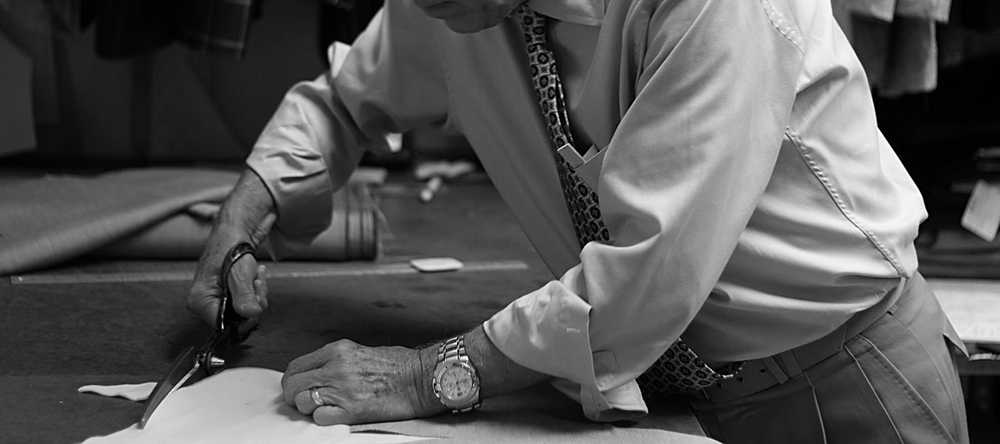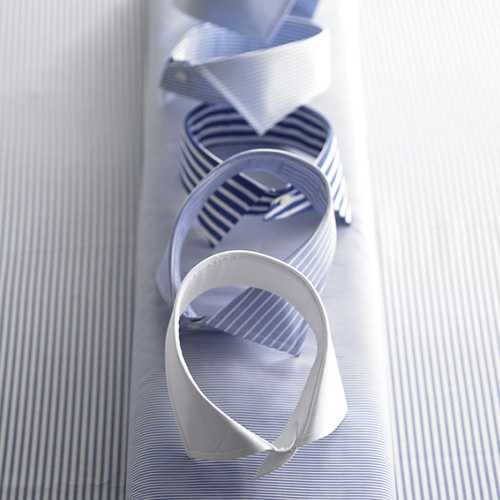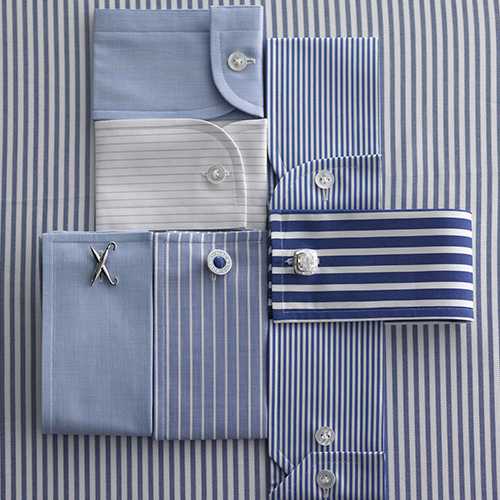Our artisans
Our shirts are produced exclusively in Italy by skilled artisans, in tailoring laboratories among the most prestigious and appreciated in the world.
Our expert tailors, true masters whose knowledge and skill has been handed down from generation to generation, deal with everything related to packaging, thus ensuring maximum precision in every phase of the manufacturing process, coupling the fabrics, creating the highest level of stitching destined to last over time, using only top quality Italian yarns, accessories and components.
Every stage of processing, from design control to fabric cutting, to the seaming of every detail is subjected to strict quality controls, combining Italian craftsmanship with the most modern and precise production technologies.
… the details that make the difference:
Needle and thread
Like any other detail of our shirts, even the button holes and thread that secures the buttons, can be customized freely, choosing from a wide range of colors.
Buttons
Our buttons are applied with the Ascolite® method: a hot welded elastic wire wraps the foot of the button giving it a great resistance.
Stitching
The seam of our shirts is handmade. With a 5mm single needle seam, robust and high quality, it has a far greater resistance over time than the industrial ones.
Fly
The fly is a triangle of fabric sewn from each side between the front and the back of the shirt, in order to reinforce stitching and avoid tearing. It is present in all our designs and can be customized on request with figures or logos.
Thickness of Collar and Cuffs
Our artisans will wrap their shirts using medium thick collars and cuffs. Custom Thicknesses of Different Hardness (Ultra Lightweight, Lightweight, Medium, Heavy, Ultra Heavy) are always available without any cost increase at customer’s request. Perhaps not everyone knows it, or they have never paid too much attention to it, but the parts of the shirt, that is, all the tailoring elements needed for its implementation, have a very precise name that has remained unaltered over time.
As with industrial production and fashion evolution some of these elements have disappeared, still today, according to the tradition of handcrafted shirts, a quality shirt must conatain all these parts. In order to understand the complexity of the shirtwork, we try to separate and recognize, one by one, the most important parts of the shirt, and to recognize in detail what determines the quality:
Front
This is exactly the front of a shirt, or rather of the two parts that compose it, where the buttons and, sometimes, the pockets are applied;
The pocket is usually sewn on the left side of the front. It is a detail that usually appears in sports shirts, especially with button down neck, and in work shirts, where it has utility as well as decorative purpose;
Cannoncino
This is the band on which the button holes are cut out.The “sewn” stitched cannon is typical of sports shirts, while in stylish and classic shirts it does not appear;
Cuff
The shape of the cuff varies according to the shirt type. In classic models, the cuff has beveled or rounded tips and the sleeve at the joining point has some small bends. In sports models, the cuff is straight;
Hips
From the seams along the hips, it is easy to deduce the quality of a shirt’s fabrication. Higher the density of the stitches higher the quality of the shirt: at least 8/9 points per cm mean an excellent shirt;
Hem
This is the finishing on the bottom of the shirt, which varies according to the model and the manufacturer;
Buttons
The buttons are also a sign of distinction for a quality shirt. In elegant shirts, they must have a thickness of at least 2/3 mm, preferably with mother-of-pearl effect. Behind the cannon should be sewn at least one pair of spare buttons;
Armholes
t is the point where the sleeve is inserted;
Carrè
It’s the part of the shirt that covers the shoulders. In quality shirts, the carrè consists of a separate part from the rest of the shirt, in double fabric and vertically cut;
Box pleat and back
The main pleat behind the shirt, worked differently according to the model. It can be smooth, with central pleat, with two side folds or with pinces for slim shirts that follow the shape of the body;
Collar
The collar also stands out according to the pattern and style of the shirt. The most popular collars are Italian, French and button down. In elegant shirts the collar is kept rigid by the insertion of metal or plastic clamps.
Fly
This is the band on which the button holes are cut out.The “sewn” stitched cannon is typical of sports shirts, while in stylish and classic shirts it does not appear;


